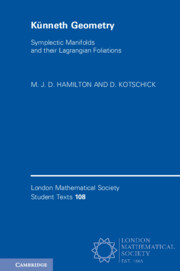Refine search
Actions for selected content:
2 results
8 - Hypersymplectic Geometry
-
- Book:
- Künneth Geometry
- Published online:
- 07 December 2023
- Print publication:
- 21 December 2023, pp 107-122
-
- Chapter
- Export citation

Künneth Geometry
- Symplectic Manifolds and their Lagrangian Foliations
-
- Published online:
- 07 December 2023
- Print publication:
- 21 December 2023
